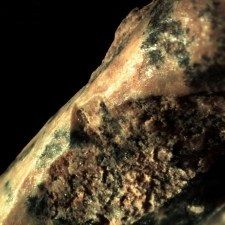Roasted tortoise was favoured food of Palaeolithic people who occupied Qesem Cave in Tel Aviv

Roast tortoise was on the menu for early humans living at a 400,000-year-old site near Tel Aviv, Israel, archaeologists have discovered. Researchers found evidence that turtle formed a staple part of the diets of Palaeolithic people living at the site – until now, it was thought they mostly ate large game and vegetables.
The Qesem Cave site was occupied by early humans for around 200,000 years. Years of excavations have shown the people there used stone toolsm and the cave serves as one of the earliest examples of the regular use of fire. The team, led by Ruth Blasco of the Centro Nacional de Investigacion Sobre la Evolucion Humana in Spain, found tortoise specimens all over the cave at different levels – suggesting they were consumed over the entire course of human occupation. Marks on the bones showed how they had been eaten – in some cases the tortoises had been roasted in their shells, in others they had been butchered first and then cooked.
Published in the Quaternary Science Reviews, the study authors said there has been much research into how pre-Upper Palaeolithic societies filled gaps in their diets with small game – and that there was a focus on tortoises because they provided both edible and non-edible resources and were easy to catch. However, it was thought that only later humans supplemented their diet with small game.

Study author Ran Barkai of Tel Aviv Iniversity said: "Until now, it was believed that Paleolithic humans hunted and ate mostly large game and vegetal material. Our discovery adds a really rich human dimension – a culinary and therefore cultural depth to what we already know about these people. We know by the dental evidence we discovered earlier that the Qesem inhabitants ate vegetal food. Now we can say they also ate tortoises, which were collected, butchered and roasted, even though they don't provide as many calories as fallow deer, for example.
"In some cases in history, we know that slow-moving animals were used as a 'preserved' or 'canned' food. This discovery adds an important new dimension to the know-how, capabilities and taste preferences of these people."
Furthermore, the find could shine a light on the division of labour among this Palaeolithic society as the tortoises would have been easy to collect by children and the elderly. "Of course they were focused on larger game, but they also used supplementary sources of food – tortoises – which were in the vicinity," Barkai added.
© Copyright IBTimes 2025. All rights reserved.






















